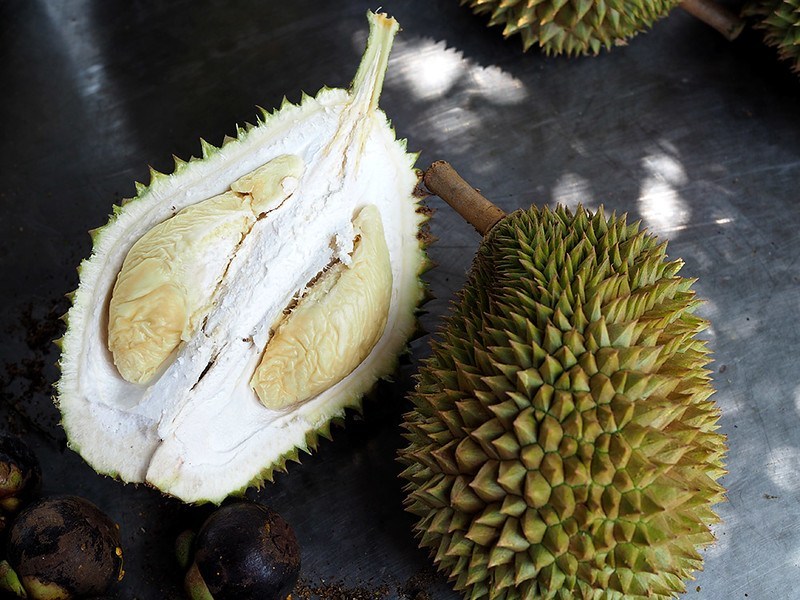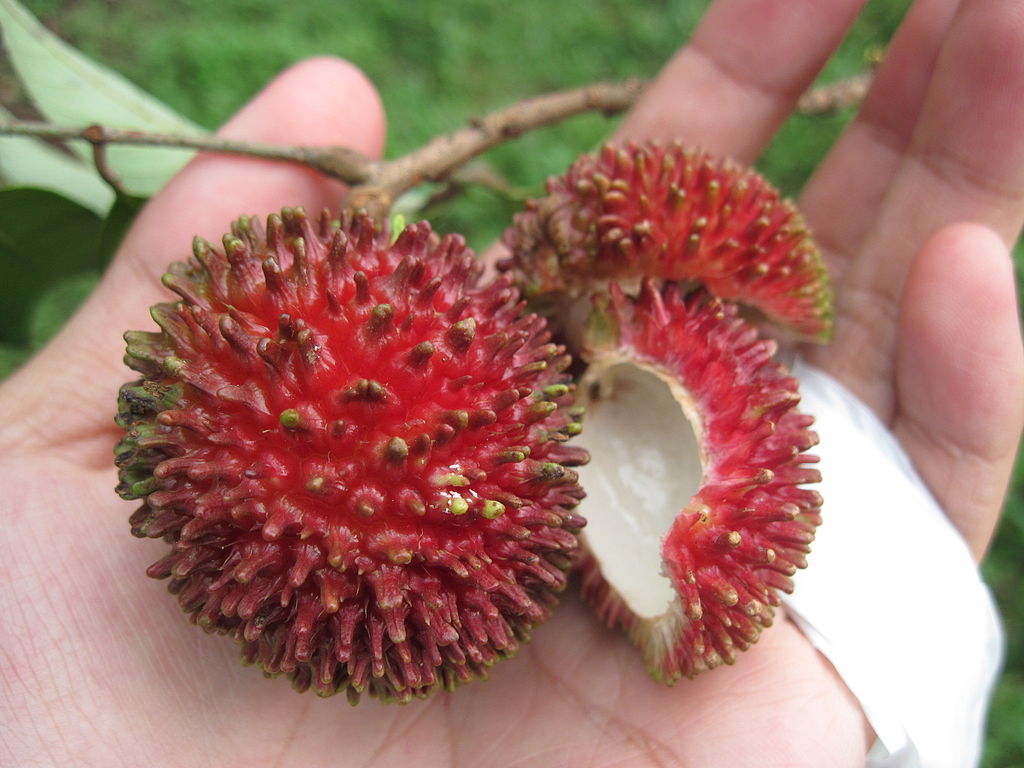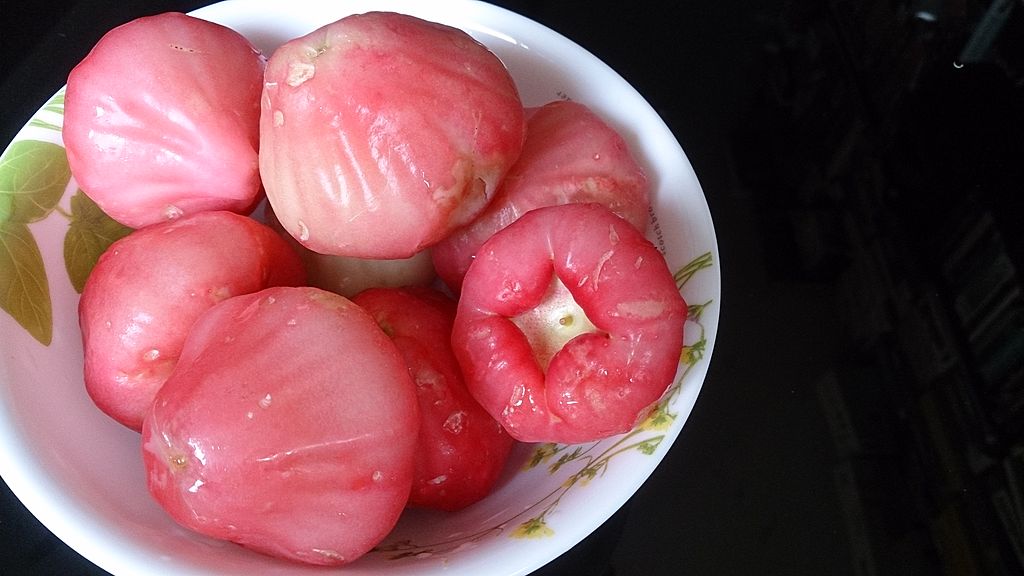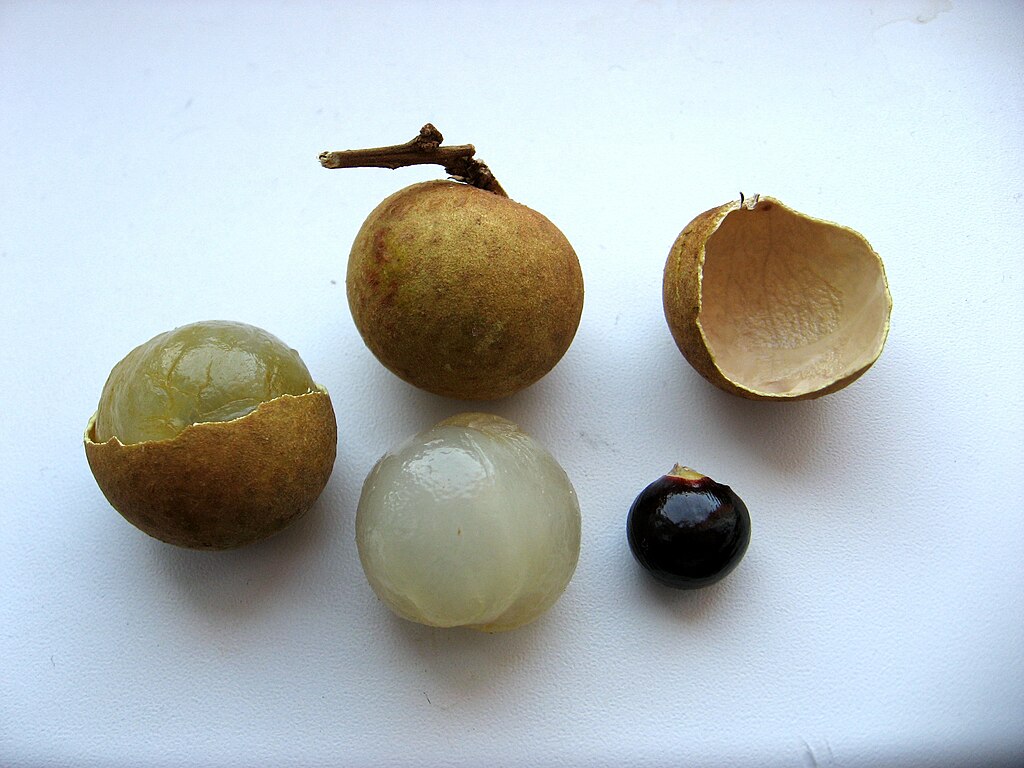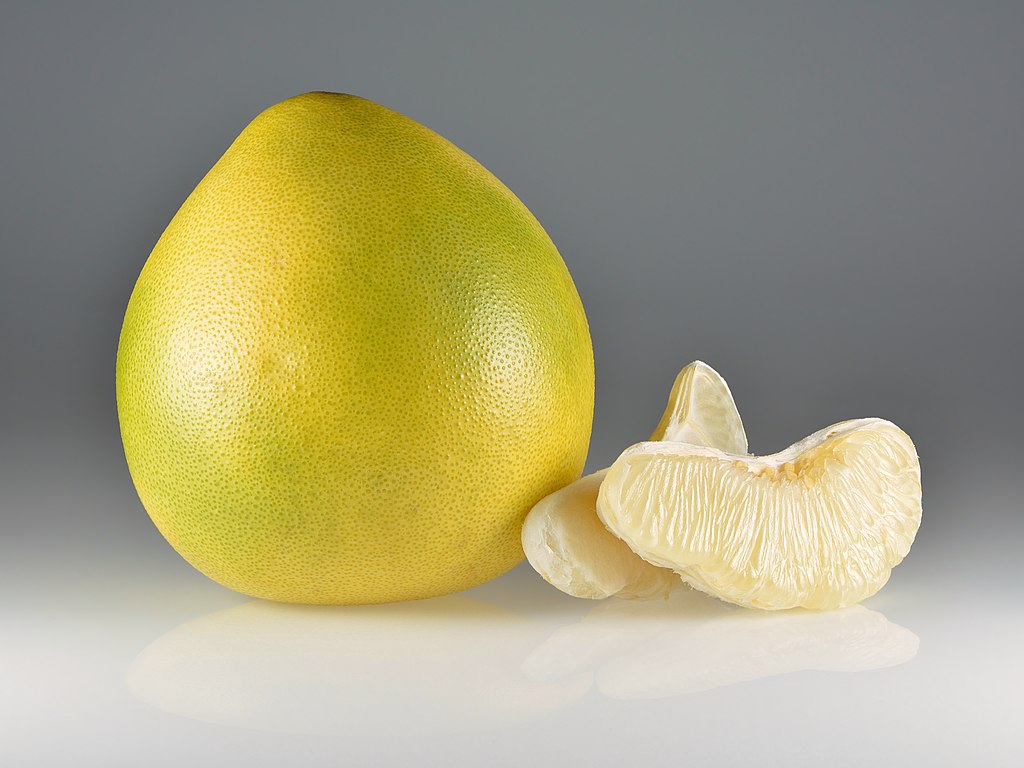15 Exotic Malaysian Fruits That You Must Try
Malaysia is a paradise for tropical fruit lovers. From the controversial “king of fruits” to the “hairy lychee”, the country’s tropical climate and fertile soil foster the growth of many exotic delights, some of which you may not have heard of.
While we do also have the usual tropical fruits that you may be more familiar with such as mangoes, papayas, bananas, pineapples, guavas, and melons, here are 15 of the lesser-known (but still easy to find) fruits that you must try in Malaysia:
Table of Contents
Toggle1. Durian
Malay name: Durian | Scientific name: Durio zibethinus
In Malaysia, the durian holds a revered yet controversial status, earning the title of the “king of fruits”, but it’s a king that polarizes people instead of uniting them. Many Malaysians display a deep affection (even bordering on obsession) for this tropical fruit, with its spiky exterior and strong aroma. When in season, there are dedicated stalls on the roadsides, at night markets, and in shopping malls offering different varieties of durian, each with its own texture, flavor, and level of pungency.
For locals, indulging in durian is more than a culinary experience; it is a social event and a source of national pride. Families and friends often gather to share the fruit or go to all-you-can-eat buffets!. There are also durian ice cream, chocolate, candy, popcorn, and even pizza!
While some relish the custard-like texture and complex flavor profile that ranges from sweet to savory, others find the potent aroma nauseating, comparing it to a blend of stinky cheese and overripe onions. Are you brave enough to try it?
2. Mangosteen
Malay name: Manggis | Scientific name: Garcinia mangostana
If the durian is the king of fruits, the mangosteen is known as the “queen of fruits”, and unlike the durian, it’s a crowd pleaser that doesn’t spark debate.
Native to Southeast Asia, this small, round fruit features a thick, purple rind that, when cracked open, reveals snow-white segments resembling cloves of garlic. The succulent flesh of the mangosteen is sweet with a tinge or tartness. Similar to durians, mangosteens are often banned in hotel rooms, not due to its smell, but its purple sap that can stain white fabric.
The mangosteen is renowned for its antioxidant-rich properties and is sometimes used in health drinks and food supplements.
3. Rambutan
Malay name: Rambutan | Scientific name: Nephelium lappaceum
Also native to Southeast Asia, the rambutan belongs to the Sapindaceae family, closely related to lychee and longan. The fruit is roughly the size of a golf ball and is covered in a spiky, hairy rind that transforms from green to bright red or yellow as it ripens.
Once opened, the translucent flesh is revealed, encasing a large oblong seed. The taste is sweet and slight acidic. Rich in vitamins, minerals, and antioxidants, rambutan not only provides a refreshing treat but also offers potential health benefits.
Interestingly, the name “rambutan” is derived from the Malay word “rambut,” meaning hair, which aptly describes the fruit’s distinctive hairy exterior.
4. Pulasan
Malay name: Pulasan | Scientific name: Nephelium mutabile
Pulasan, often referred to as the “wild rambutan”, is closely related to rambutan and lychee. Having an almost similar appearance and taste, pulasan and rambutan are often mistaken for one another. However, the pulasan’s spines are generally shorter and denser, not hair-like. The fruit is typically reddish or maroon when ripe.
5. Jackfruit
Malay name: Nangka | Scientific name: Artocarpus heterophyllus
Jackfruit has gained global popularity for its enormous size, distinctive aroma, and versatile culinary applications. It is the largest fruit of all trees, with some varieties reaching an impressive weight of up to 80 pounds (36 kilograms)!
Its exterior is covered in green, slightly spiky skin (less spiky than the durian), while inside are bulbs of golden-yellow flesh known for its subtle sweetness. What makes it most special is its unique texture that is tender and can be pulled apart into individual fibrous strands, like pulled pork or shredded chicken. This characteristic has led to jackfruit being used as a meat substitute in plant-based dishes, particularly in savory preparations like curries, sandwiches, or tacos.
Beyond its culinary merits, jackfruit is also a nutrient-rich fruit, providing a good source of dietary fiber, vitamins, and minerals.
6. Cempedak
Malay name: Cempedak | Scientific name: Artocarpus integer
Cempedak is closely related to jackfruit, belonging to the same genus, and is native to Southeast Asia. Like jackfruit, cempedak is a large fruit that grows on tall trees.
While the two fruits share some similarities, they also have notable differences. Cempedak is smaller than jackfruit, typically ranging from 15 to 30 centimeters in length. The exterior of cempedak is covered in a thick, green or yellowish rind with hexagonal patterns.
In terms of texture and taste, cempedak shares the sweet and aromatic characteristics of jackfruit, but its flavor profile is often considered more intense and its texture softer, with a creamy consistency.
Like jackfruit, cempedak can also be used in culinary applications, although it is less versatile and is often only used in desserts or fritters.
7. Soursop
Malay name: Durian Belanda | Scientific name: Annona muricata
Hailing from the Americas, soursop is characterized by its spiky green skin and irregular shape. The flesh is soft, white, fibrous pulp studded with dark seeds. It is known for its sweet and tangy taste, and can either be consumed fresh or used in beverages, ice creams, and other desserts.
Beyond its refreshing flavor, soursop has been studied for its potential medicinal and anticarcinogenic properties.
Its Malay name “durian Belanda” translates to “Dutch durian” in English. However, it is not scientifically related to the infamous durian. The name may be attributed to the spiky skin resembling the durian and a historical association with the Dutch, as the fruit was introduced to Southeast Asia during the colonial period by one of the European colonizers, possibly the Dutch.
8. Ciku
Malay name: Ciku | Scientific name: Manilkara zapota
Ciku, also known as sapodilla, is an oval-shaped fruit with rough, brown skin encasing the deliciously sweet, slightly grainy, earthy-flavored flesh within. Native to Central America, ciku has found its way to tropical regions around the world, including Southeast Asia.
When ripe, the flesh of ciku transforms into a creamy, brownish pulp, containing a few shiny black seeds at the center. The flavor has been likened to that of pear with hints of caramel and brown sugar. Ciku is commonly enjoyed fresh, peeled, and sliced.
9. Starfruit
Malay name: Belimbing | Scientific name: Averrhoa carambola
Starfruit derives its name from its five-pointed star shape when sliced crosswise. Native to Southeast Asia, starfruit features smooth, glossy skin that can range from yellow to green, and the entire fruit is edible, including the thin, waxy layer. The flavor of starfruit is again a harmonious combination of sweet and tangy.
Rich in vitamin C, fiber, and antioxidants, starfruit is commonly enjoyed fresh, sliced into star-shaped pieces, and used as a garnish or in salads.
10. Snakeskin Fruit
Malay name: Buah salak | Scientific name: Salacca zalacca
Snakeskin fruit, also known as salak or salacca, is characterized by its unique brown, scaly skin, resembling snake scales, hence its name. Native to Indonesia, it is now cultivated in various tropical regions.
Peeling the skin will reveal clusters of small, seed-containing segments inside. The flesh is crisp, with a tart flavor. Snakeskin fruit is appreciated not only for its distinct taste but also for its nutritional value, providing a good source of vitamins, minerals, and dietary fiber.
11. Water Apple
Malay name: Jambu air | Scientific name: Syzygium aqueum
Water apple, also known as “rose apple”, is appreciated for its crisp and watery texture. In fact, it got its name from its high water content.
The fruit has a smooth, thin skin that can range in color from green to pink or red. The flesh is crisp and slightly sweet, often likened to a cross between an apple and a watermelon. Water apples are commonly enjoyed fresh, either sliced or bitten into directly. They are also used in fruit salads.
12. Longan
Malay name: Buah mata kucing | Scientific name: Dimocarpus longan
Longan is a small round fruit with a pale-brown to light yellowish skin that is thin and easily peeled. Once opened, longan reveals a juicy, translucent flesh that surrounds a shiny black seed. The taste is sweet and floral.
Longan is often enjoyed fresh, either on its own or as an addition to fruit salads, desserts, and beverages. It is also commonly used in traditional Asian medicine for its believed health benefits. It is said to be a good source of vitamins and minerals, including vitamin C, potassium, and iron.
13. Duku, Langsat & Dokong
Malay name: Duku, langsat & dokong | Scientific name: Lansium domesticum / parasiticum
Duku, langsat, and dokong are three very similar-looking fruits. With only slight differences in the shape, size, and skin thickness, they are often indistinguishable from one another to untrained eyes.
Compared to longan, however, these three are slightly bigger in size. While the flesh of longan is a single berry with a black round seed, the inner part of langsat / duku / longan consists of cloves (like garlic), and the flavor carries a tanginess that is slightly more pronounced than that of longan.
14. Pomelo
Malay name: Limau bali | Scientific name: Citrus maxima
Pomelo is a Southeast Asian citrus variety with a thick yellow or greenish-yellow rind that conceals generous segments of juicy, white to pale pink flesh. Its taste is a blend of sweetness and a mild tang.
The pomelo holds cultural significance in Malaysian festivals and celebrations, often used as an offering or gift. Its versatility extends from being enjoyed fresh to being incorporated into salads, desserts, and beverages.
15. Ambarella
Malay name: Kedondong | Scientific name: Spondias dulcis
Ambarella, also known as amra or June plum, belongs to the cashew family. It is recognized for its shape that resembles a small green mango or a bell. The skin is smooth and green when unripe, turning yellow-orange as it matures.
The crisp flesh within is sweet and sour. Ambarella is often eaten fresh, either on its own or included in salads, salsas, or chutneys. In Malaysia, it is also used to make refreshing beverages or pickled snacks.
Where to Find Them
In Malaysia, local fruits can be found in various locations. In the city center, supermarkets are your easiest option, but the variety may be limited and the price a little steep. Traditional wet markets, night markets, and farmer’s markets usually offer better deals and fresher goods.
Additionally, in some regions like Penang, Johor, and Pahang, visitors may also engage in agritourism — visiting orchards and fruit farms, and picking fruits straight from the trees to savor the freshness of the harvest.
Aside from that, exploring local neighborhoods and suburban areas may reveal hidden gems, with fruit trees lining residential streets. Wherever you are in Malaysia, delicious tropical fruits are never far from reach.
Have you tried any of these unique Malaysian fruits? Which one is your favorite? Share in the comment section below.
